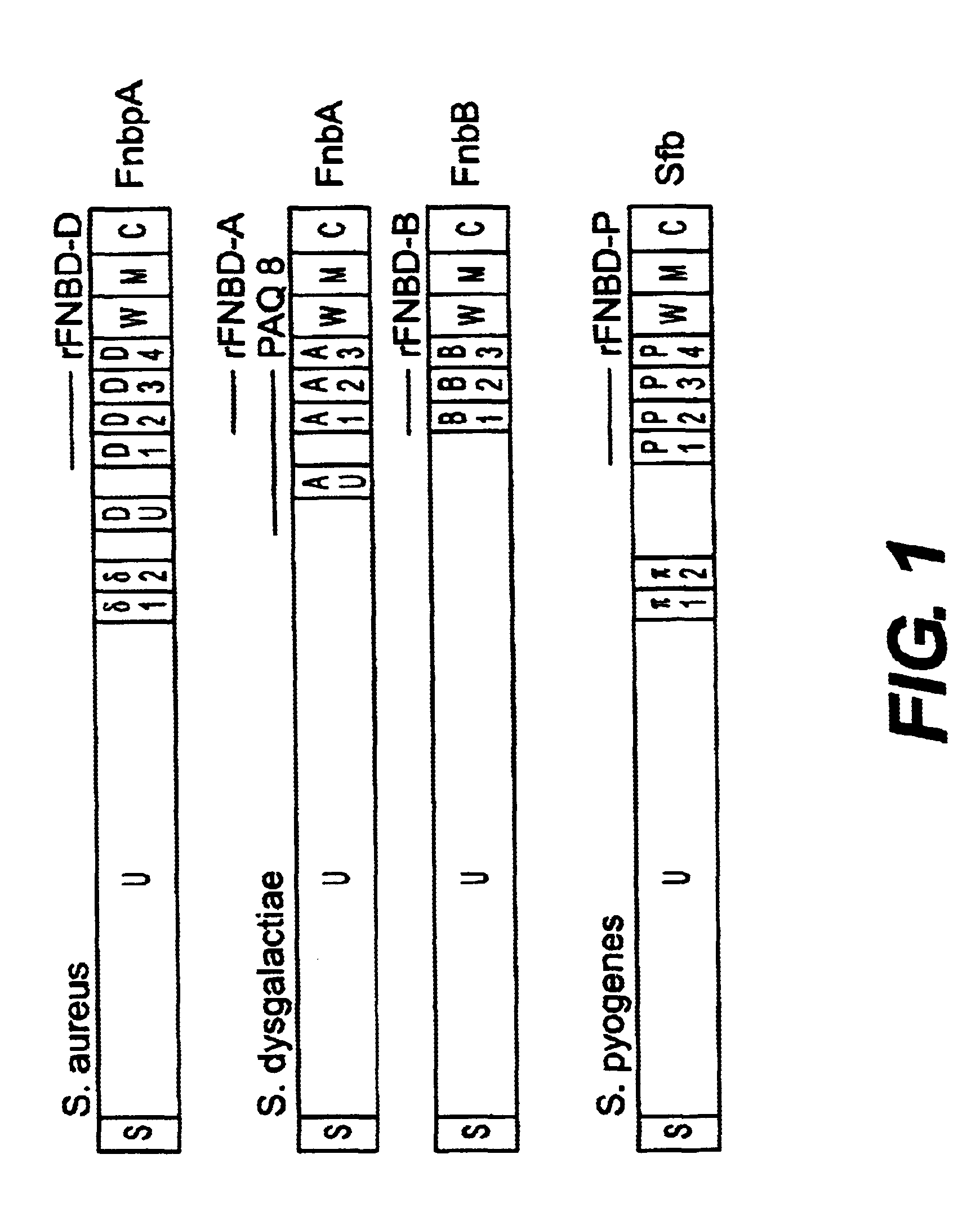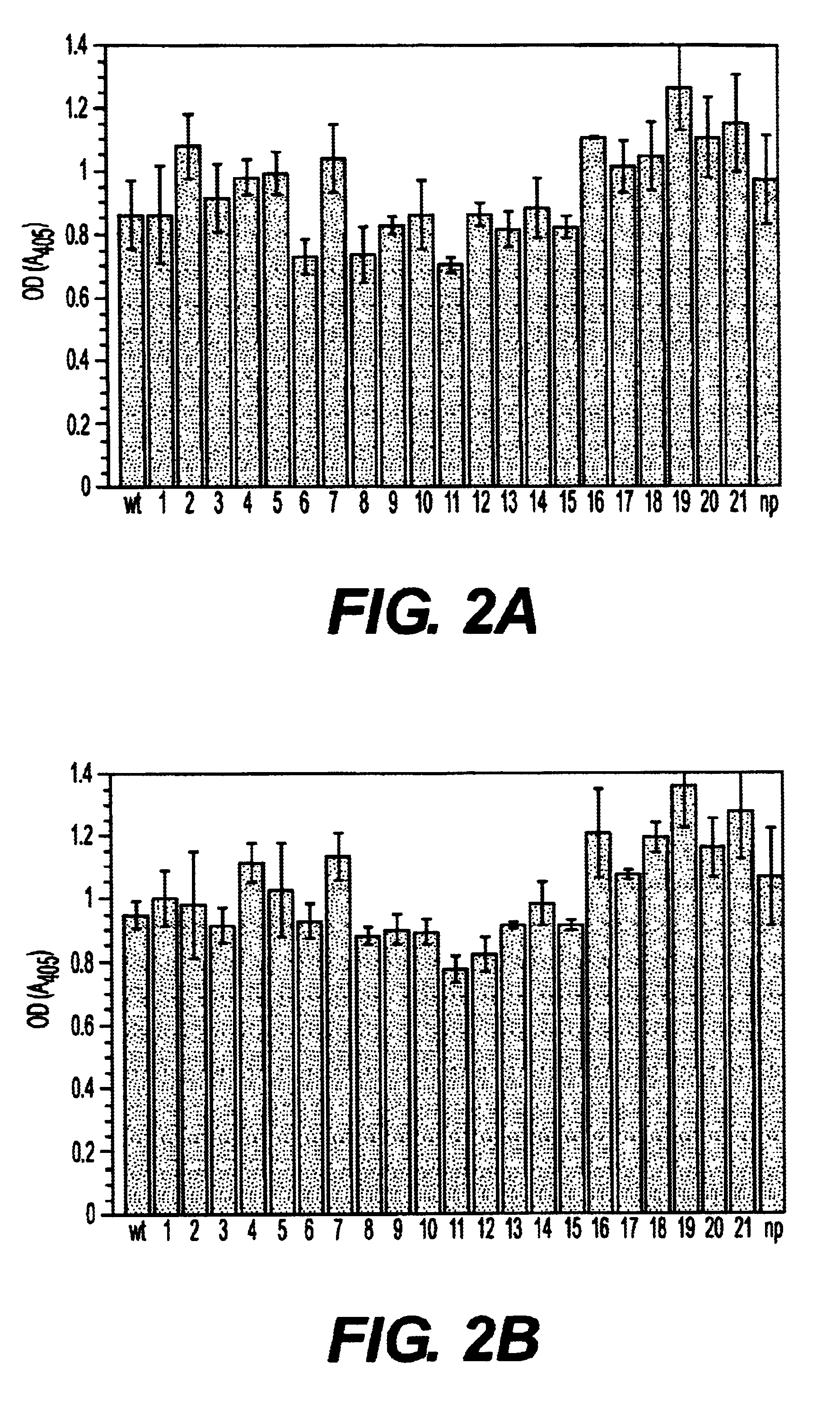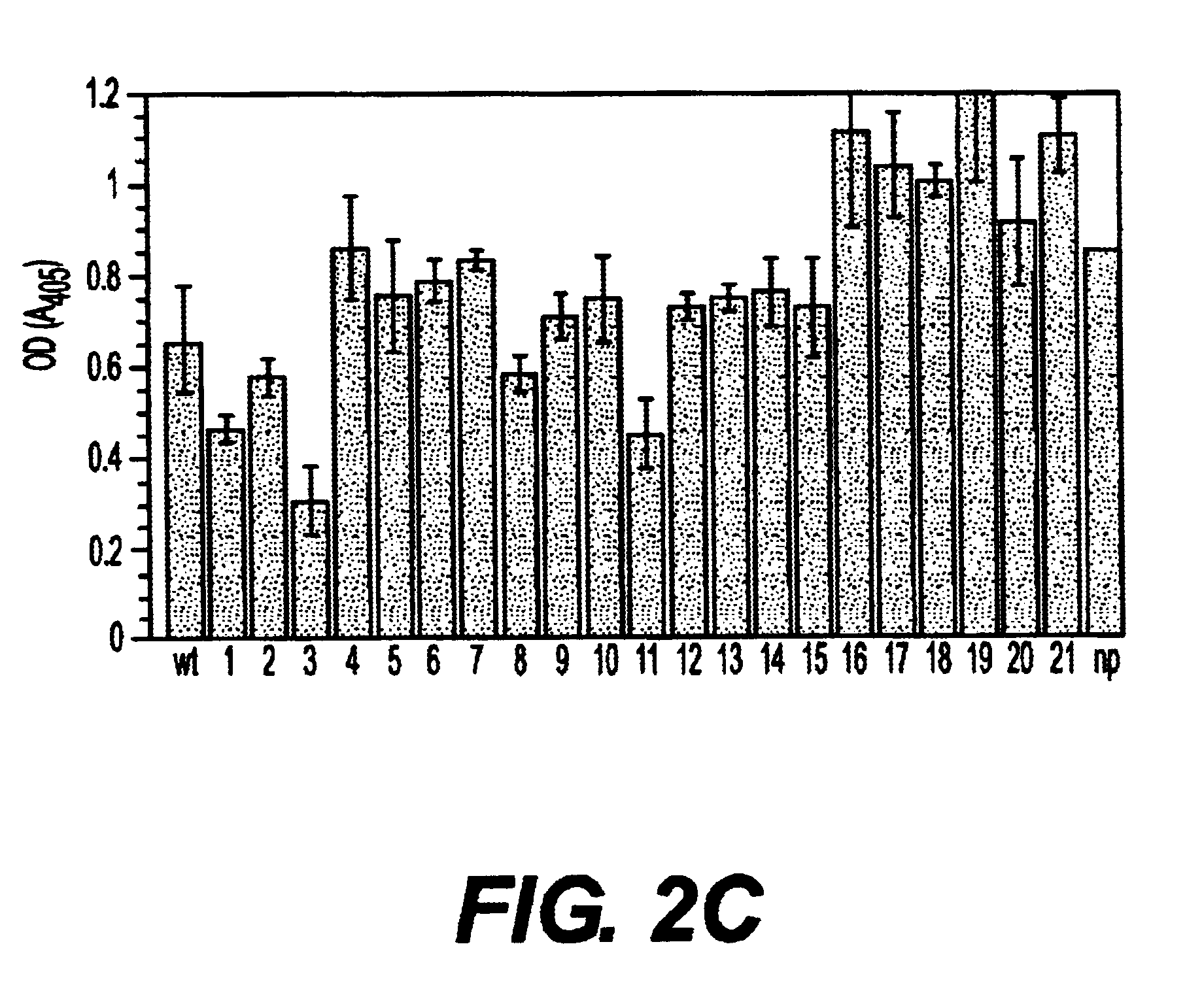Fibronectin binding protein compositions and methods of use
a technology of fibronectin and protein composition, applied in the field of molecular biology, can solve the problems of unable to generate blocking antibodies using both synthetic peptides and different forms of d1-3 immunogen, and unable to achieve high affinity antibodies that could block s. aureus binding to fn, etc., to achieve the effect of preventing bacterial adhesion
- Summary
- Abstract
- Description
- Claims
- Application Information
AI Technical Summary
Benefits of technology
Problems solved by technology
Method used
Image
Examples
example 1
5.1 Example 1
Antibody Compositions Which Inhibit Adhesion to Fn: Synthesis of S. Dysgalactiae FnBA and FnBB-Derived Epitope Analogs
Amino acid substitutions are made in synthetic peptides using the methods below to produce peptides which result in a loss of Fn binding activity. Such activity loss is evaluated in the context of the recombinant Fn-binding MSCRAMM protein. Using site-directed mutagenesis systematic changes are made in the appropriate amino acids to mimic the changes made in the synthetic peptides that lead to the loss of Fn binding activity. The Fn binding activity of native and mutated versions of isolated rFnBD-D are compared using previously published procedures (Speziale et al., 1984). Selected recombinant Fn-binding MSCRAMMs and synthetic peptides are then used as antigens to generate blocking antibodies.
5.1.1 Synthesis and Purification of Peptides
Peptides are synthesized on an Advanced ChemTech MPS 396 peptide synthesizer (Louisville, Ky.) using Fmoc (Chang and Me...
example 2
5.2 Example 2
Antibody Compositions Which Inhibit Adhesion to Fn: Synthesis of S. Aureus FnBPA-Derived DU and D1-D4 Epitope Analogs
In Example 1, the inventors reported the synthesis of epitope analog peptides for use in generating blocking antibodies which recognize various domains of a variety of streptococcal and staphylococcal fibronectin binding proteins. This example describes the preparation of such synthetic epitopes from the Fn binding domains DU, and D1-D4 of the S. aureus fnbA gene (FIG. 1). The preparation of mutants of DU and D1-D4 leads to the altered amino acid sequences shown below in Table 2.
In addition a number of combinations of single, double, and triple mutations, etc. could be made using the modified codons similar to those shown in Table 2 to produce peptides having multiple mutated amino acid residues.
Amino acid substitutions made from each of the corresponding synthetic peptides were evaluated for their loss of Fn binding activity. These peptides were then use...
example 3
5.3 Example 3
Antibody Compositions Which Inhibit S. Aureus Adhesion to Fn: Site-Specific Mutagenesis or DNAs Encoding fbpA-Derived Epitopes
The S. aureus fnbA DNA segments of the present invention find particular utility in the production of recombinant peptides. These peptides may be native DU or D1-D4 epitopes, or site-specifically-modified DU- or D1-D4-derived peptides. The general techniques of site-specific mutagenesis disclosed herein may be used to prepare nucleic acid segments containing altered DNA sequences. Details for such procedures are given below.
The PCR.TM. based strand overlap extension (SOE) (Ho et al., 1989) for site-directed mutagenesis is particularly preferred for site-directed mutagenesis of the nucleic acid compositions of the present invention. The techniques of PCR.TM. are well-known to those of skill in the art, as described hereinabove. The SOE procedure involves a two-step PCR.TM. protocol, in which a complementary pair of internal primers (B and C) are u...
PUM
| Property | Measurement | Unit |
|---|---|---|
| concentrations | aaaaa | aaaaa |
| concentrations | aaaaa | aaaaa |
| concentrations | aaaaa | aaaaa |
Abstract
Description
Claims
Application Information
 Login to View More
Login to View More - R&D
- Intellectual Property
- Life Sciences
- Materials
- Tech Scout
- Unparalleled Data Quality
- Higher Quality Content
- 60% Fewer Hallucinations
Browse by: Latest US Patents, China's latest patents, Technical Efficacy Thesaurus, Application Domain, Technology Topic, Popular Technical Reports.
© 2025 PatSnap. All rights reserved.Legal|Privacy policy|Modern Slavery Act Transparency Statement|Sitemap|About US| Contact US: help@patsnap.com



